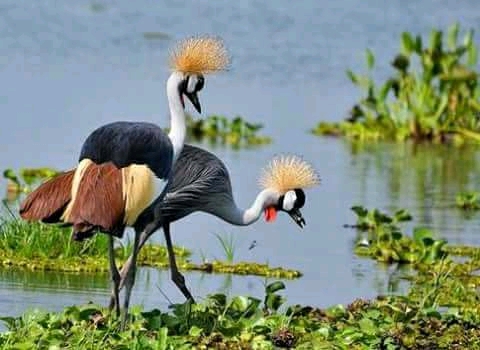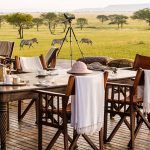Visit Uganda the Pearl of Africa

Have you dreamed of visiting Africa especially in Uganda? Uganda, the ‘Pearl of Africa’, straddles the equator and embraces the shores of the world’s largest inland lake, the mighty Lake Victoria.
The source of the Nile at Jinja, Uganda is also home to one of the most ancient volcanoes on earth; Mount Elgon, pristine and still largely undiscovered, Uganda promises a vibrant tapestry of diverse vista against a backdrop of sparkling lakes, island, rivers and falls.
The country is endowed with plentiful natural resources, a vast diversity of wildlife and geography. It is situated on the equator where the West African Jungle meets the East African Savannah in the African Great Lakes region with several major lakes including a large portion of Lake Victoria.
Before you take a visit to Uganda, you need to know what to do, where to stay, Visa requirements, where to go, plus not forgetting the necessary health requirements and your first Aid Kit, like any new destination you may be visiting and how to avoid any tourist scams for a safe trip.
For those intending to visit Uganda, it has two seasons, that is the dry season and the wet season. The dry season takes the months from June to October and from December to February, while the wet season takes the months from mid-March to May and then November.
One of the most delightful climates in the world
Blessed with one of the most delightful climates in the world, landlocked Uganda occupies a serene green plateau, which lies between the eastern and western branches of the Great Rift Valley. It has tropical climate with plentiful rainfall and fertile land.
The Land of Lakes
25% of Uganda’s entire surface is covered by a glittering skein of lakes, islands and rivers earning her the title ‘The land of lakes’. They include the mighty Nile, which rises in Jinja, and the world’s second freshwater lake, Lake Victoria.
Moorland to rain forests, savannah to swamp
The meeting point of the East African savannah and the West African, Uganda’s vegetation immensely diverse stretching from snow-capped peaks and Afro-Alpine moorlands to dense rain forests, golden savannah and semi- arid landscapes, agriculture is the dominate sector of Uganda’s economy, contributing more than 70% of gross domestic product and providing a livelihood for 90% of the population.
Agriculture and fishing
Agriculture and fishing play a major role in the livelihood of the people, with export crops including coffee, cotton and tobacco. Among Uganda’s natural resources there are significant mineral deposits as well as mostly untapped reserves of crude oil.
Precious Primates
Uganda’s pristine rain forests protect a wealth of wildlife including over ten species of primate. Uganda is also one of the top places in the world to see Chimpanzees, which are abundant in Kibale Forest National Park, the Budongo Forest in Murchison Falls National Park, and the Kyambura Gorge and Kalinzu in Queen Elizabeth National Park.
Globally famous Mountain Gorillas
Of the few thousand mountain gorillas that remain on earth over half of them live in Uganda’s Bwindi Impenetrable and Mgahinga Gorilla National Parks, and so precious are they that many people book their ‘gorilla viewing permit’ years in advance, which makes the shy and gentle mountain gorillas, earth’s largest living primates, Uganda’s most famous tourist attraction.
A gorilla trekking tour permit goes for $700 USD all year round and you should keep in mind that a portion of the fee goes to the park and gorilla conservation initiatives, helping to ensure their survival.
Kibale playground of the chimpanzees
The playground of Uganda’s chimpanzees, Kibale National Park is one of the last remaining areas of rain forest in Africa and offers the visitor a 75% chance of viewing the 600 chimpanzees that nest in its tree canopy.
The spectacular waterfalls of the Nile
Murchison Falls National Park, Uganda’s largest is dominated by the mighty Victoria Nile which bisects the park via seven metre – wide rocky cleft before dropping 43 metres over the western edge of the Albertine Rift.
Offering river cruises and guided walks, it ranks as one of the most exciting wildlife experiences Africa has to offer and is the place to see hippos and crocodiles.
The park is home to 76 species of mammals including four of the “Big Five”, with huge herds of buffaloes and elephants, well-camouflaged leopards and a healthy population of lions.
It is also known for its giraffes; in Uganda these can only be viewed here and in Kidepo Valley National Park. Other species viewed regularly along the game tracks include Jackson’s hartebeest, bush bucks, Uganda Kob, water bucks and warthogs. Resident crocodiles and hippos as well as other, visiting wildlife are found along the river.
Queen Elizabeth National Park
Queen Elizabeth National Park is in southwest Uganda. Leopards roam the Mweya Peninsula, which lies beside Lake Edward. Nearby Lake Katwe is a huge volcanic explosion crater. Boats on the Kazinga Channel float past hippos and Nile crocodiles.
Chimpanzees inhabit the Kyambura Gorge. Trails lead to bat caves in the central Maramagambo Forest. The Ishasha area is home to tree-climbing lions and shoe bill storks.
With an astonishing 5000 hippos, 2500 elephants and over 10,000 buffalo thriving in its grasslands and shorelines, Queen guarantees sightings of some of Africa’s most iconic species.
Hearing the elephants’ calls reverberate around Queen’s crater-filled valleys is a magical experience. Other common herbivores include warthogs, water buck, Uganda Kob and Topi, as well as the sitatunga antelope.
Lake Mburo National Park
Lake Mburo National Park is a compact gem, located conveniently close to the highway that connects Kampala to the parks of western Uganda.
It is the smallest of Uganda’s Savannah national parks and underlain by ancient Precambrian metamorphic rocks which date back more than 500 million years.
The park’s varied habitats support 68 mammal species. Rarities include impala, which, in Uganda, only lives in Lake Mburo, and Burch ell’s zebra and eland which are found only here and in Kidepo. Other species include warthog, buffalo, Oribi, Defassa water buck and reed buck.
Leopard and hyena are also present while crocodile and over 300 hippos are found in the lake. Previously extinct in the park, lions have recently been sighted again.
Adventures you shouldn’t miss out in Uganda
The white water rafting with its grade 5 rapids, the Nile is a magnet for white water rafting enthusiasts or even try kayaking, a white knuckle jet boat ride.
Those who prefer a different kind of adventure can opt for bungee jumping by Adrift Uganda. Trekkers can test their endurance by trekking the UNESCO World Heritage-listed Rwenzori Mountain, described as the ‘Mountain of the Moon’, with stunning views of the equatorial mist as a reward at the top.
The Big Five and the Best Birding
Uganda offers 50 large mammal species and all the members of the ‘Big five’. Regarded by many to be ‘Africa’s finest birding destination.
There are 60 protected areas including 10 national parks where you can observe 330 species of mammals and over 1,000 species of birds including many of the popular animals we associate with Africa including lions, elephants, rhinoceros, hippos, giraffes, gorillas and chimpanzees.
Scenaries for relaxation not to be missed
Once the safari is coming to an end and your body needs some rest from those massaging bumpy roads, Uganda has some beautiful spots for relaxing.
Don’t miss out the magical Lake Bunyonyi also called ‘Place of many little birds’ located in south western Uganda between two districts of Kisoro and Kabale close to the border with Rwanda.
It has intoxicating dotted beautiful islands with beautiful views, with the mist hanging low over terraced hillsides and dugout canoes gliding through still waters.
Don’t miss out the Ssese islands in the oceanic sized Lake Victoria that has some of the finest white sand beaches and burning sunsets.
Situated in the northwest of Lake Victoria, the Ssese Islands form one of Uganda’s prime destinations for casual rambling and off-the-beaten-track exploration, as well as for game fishing, in particular Nile perch.
The islands occupy the north-western corner of Lake Victoria, the second-largest freshwater lake in the world. It is the kind of place where you will want to go for relaxation with your family or loved one.
Then there is the stunning Sipi Falls Sipi with a series of three waterfalls in Eastern Uganda in the district of Kapchorwa, northeast of Sironko and Mbale.
The waterfalls lie on the edge of Mount Elgon National Park near the Kenyan border. The Sipi Falls area is the starting point for many hikes up Mt. Elgon.
The most popular route starts in Budadiri and follows the Sasa trail to the summit and then descends down the Sipi trail back into the Sipi Falls. Hikes around the falls offer stunning views of the Karamoja plains, Lake Kyoga, and the slopes of Mt. Elgon.
High-octane Action and Adventure
Thanks to her wealth of rivers and lakes, Uganda offers wealth of high-action water sports, her parks promise game drives and nature trails galore, her mountains guarantee some of the most glorious hiking and trekking in Africa and her towns and cities offer everything from lush golf courses to state of-the-art fitness clubs and spas.
Agriculture and fishing
Agriculture and fishing play a major role in the livelihood of the people, with export crops including coffee, cotton and tobacco. Among Uganda’s natural resources there are significant mineral deposits as well as mostly untapped reserves of crude oil.
Rich culture Tapestry
Human presence in Uganda goes back over 500,000 years and her cultural history is rich in song, dance, music, theatre and art.
Her cuisine is as eclectic as her many ethnic groups and handicraft ‘finds’ include traditional back-cloth, painted gourds, basketwork, pottery, carvings, spears and traditional drums.
Heritage aside, capital city Kampala promises a truly cosmopolitan selection of hotels, restaurants, bars, clubs, street food, galleries and malls.
Rock paintings to Royal Tombs
Uganda promises a breadth of historical interest including the Uganda National Museum, Kabaka’s Lake, the Kakoro Rock paintings, the Kasubi tombs, Masaka hill, the Mparo tombs, Mubende hill, the Munsa Earthworks, the Namugongo shrine, the Nkokonjeru tomb, Numagabwe cave and the Nyero Rock paintings.






0 Comments